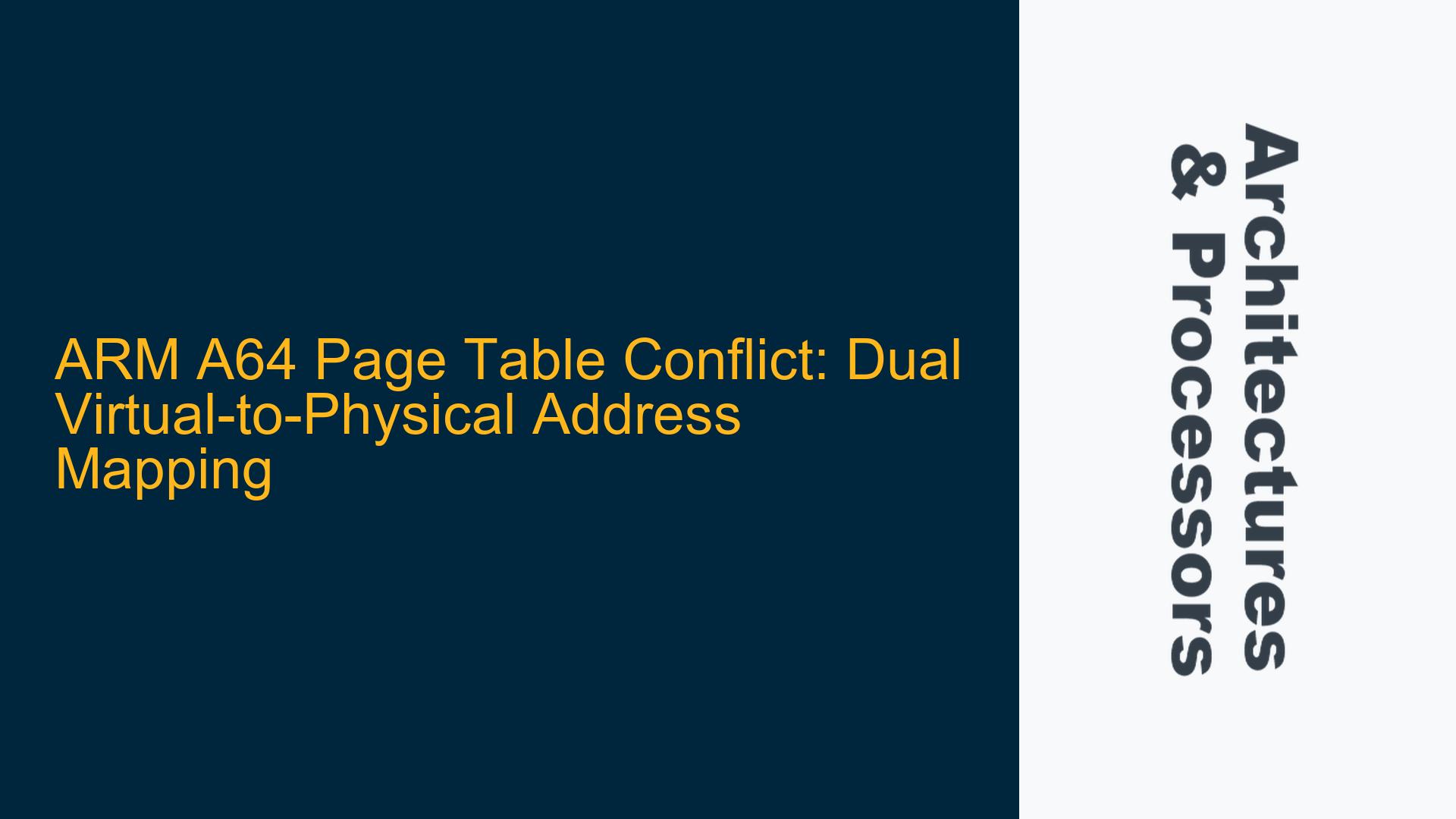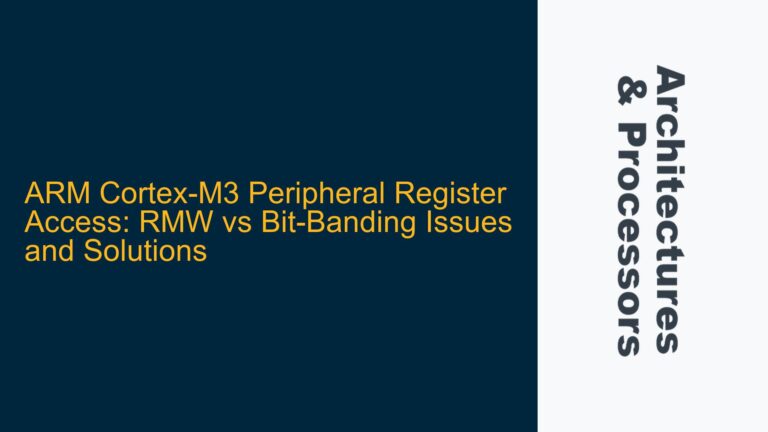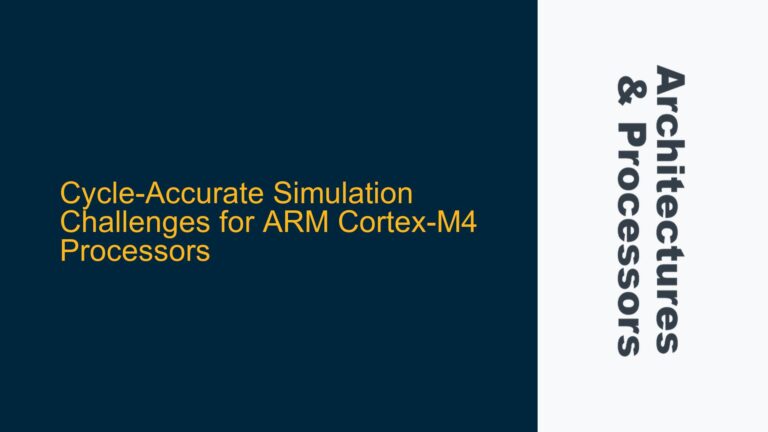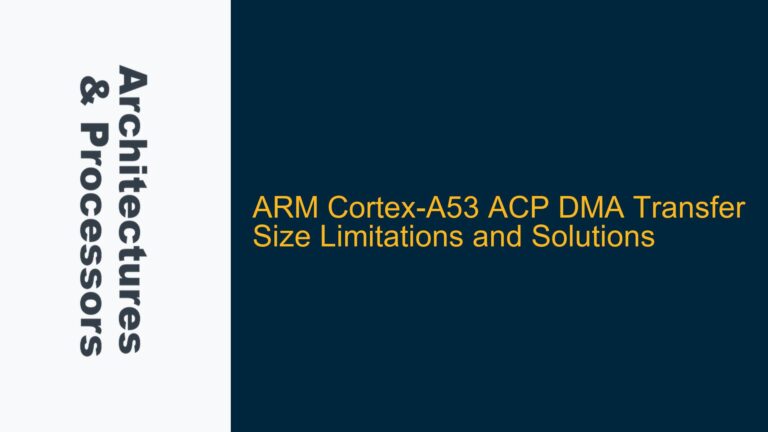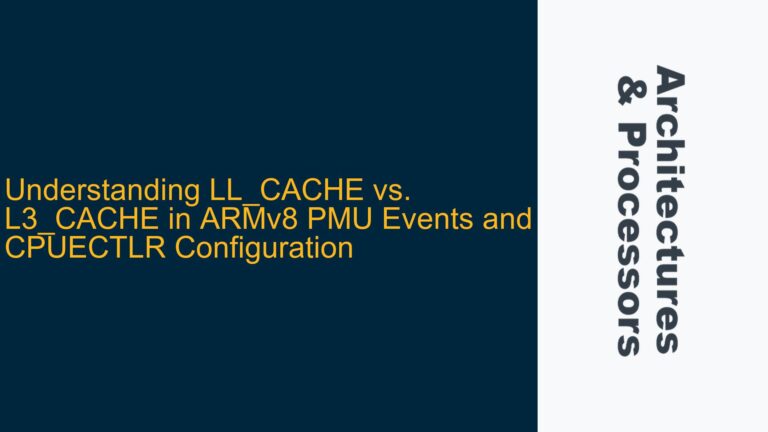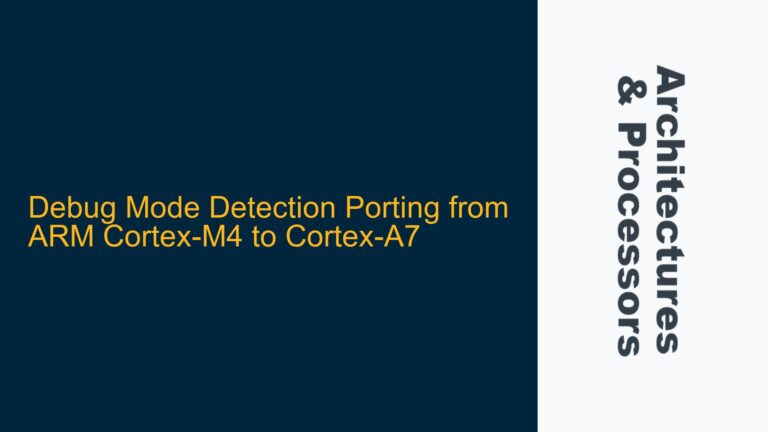ARM Cortex-A72 Page Table Conflict Leading to Application Failure
The core issue revolves around a bare metal application running on an ARM Cortex-A72 processor, which is experiencing a failure due to a conflict in the page table mappings. The application is responsible for creating and managing the virtual-to-physical (VA-PA) address translations. During execution, the CPU encounters a virtual address 0xc0000000, which is mapped to the physical address 0x05900000. However, the page table entries reveal that the physical address 0x05900000 is mapped twice with different attribute indices (111 and 001). This dual mapping creates ambiguity in the memory attributes applied to the physical address, leading to potential inconsistencies in memory access behavior and application failure.
The disassembly of the failing instruction sequence shows the CPU attempting to access the virtual address 0xc0000000, which translates to the physical address 0x05900000. The page table walk reveals two distinct entries for the same physical address, each with different memory attributes. The first entry, located at 0x05114000, maps 0xc0000000 to 0x05900000 with an attribute index of 111. The second entry, located at 0x05115800, maps 0x05900000 to itself with an attribute index of 001. This discrepancy raises questions about which mapping the CPU will prioritize and whether such a configuration is valid.
The memory attributes defined by the attribute index (AttrIndex) in the page table entries control critical aspects of memory access, such as cacheability, shareability, and access permissions. In this case, the conflicting attribute indices (111 and 001) could result in unpredictable behavior, as the CPU may apply inconsistent memory attributes to the same physical address. This inconsistency can lead to data corruption, incorrect cache behavior, or even access violations, depending on the specific attributes defined by the indices.
Dual Page Table Entries with Conflicting Attribute Indices
The root cause of the issue lies in the presence of dual page table entries for the same physical address (0x05900000) with conflicting attribute indices. The ARMv8-A architecture allows for hierarchical page table walks, where the CPU traverses multiple levels of page tables to resolve a virtual address to a physical address. During this process, the CPU relies on the attributes specified in the page table entries to determine how the memory should be accessed.
In this scenario, the page table walk reveals two distinct entries for the physical address 0x05900000:
- The first entry, located at
0x05114000, maps the virtual address0xc0000000to the physical address0x05900000with an attribute index of111. - The second entry, located at
0x05115800, maps the virtual address0x05900000to the same physical address0x05900000with an attribute index of001.
The attribute index (AttrIndex) is a 3-bit field in the page table entry that references a set of memory attributes defined in the Memory Attribute Indirection Register (MAIR). The MAIR contains eight attribute fields, each defining specific memory properties such as cacheability, shareability, and access permissions. The conflicting attribute indices (111 and 001) imply that the same physical address is being accessed with two different sets of memory attributes, leading to undefined behavior.
The ARMv8-A architecture does not explicitly prohibit multiple virtual addresses from mapping to the same physical address. However, it requires that all such mappings have consistent memory attributes to ensure predictable behavior. In this case, the conflicting attribute indices violate this requirement, creating a potential for race conditions, data corruption, or access violations.
Resolving Page Table Conflicts and Ensuring Consistent Memory Attributes
To resolve the issue, the page table configuration must be corrected to ensure that all mappings to the same physical address have consistent memory attributes. This involves identifying and eliminating the conflicting page table entries and ensuring that the memory attributes are uniformly applied across all mappings.
Step 1: Identify All Mappings to the Physical Address
The first step is to perform a comprehensive page table walk to identify all virtual addresses that map to the physical address 0x05900000. This includes examining all levels of the page table hierarchy (Level 1, Level 2, and Level 3) to ensure that no conflicting entries exist. The page table walk should be performed programmatically or using a debugger to automate the process and avoid missing any entries.
Step 2: Analyze the Attribute Indices and MAIR Configuration
Once all mappings to the physical address 0x05900000 have been identified, the next step is to analyze the attribute indices (AttrIndex) associated with each mapping. The attribute indices should be cross-referenced with the Memory Attribute Indirection Register (MAIR) to determine the specific memory attributes being applied. The MAIR configuration should be reviewed to ensure that the attribute fields are correctly defined and consistent with the intended memory properties.
Step 3: Consolidate Mappings with Consistent Attributes
After analyzing the attribute indices and MAIR configuration, the conflicting mappings should be consolidated to ensure that all virtual addresses mapping to the physical address 0x05900000 use the same attribute index. This may involve modifying the page table entries to use a single attribute index or updating the MAIR to align the attribute fields with the intended memory properties.
Step 4: Implement Memory Barriers and Cache Maintenance
Once the page table entries have been corrected, it is essential to implement memory barriers and cache maintenance operations to ensure that the changes take effect immediately. The Data Synchronization Barrier (DSB) instruction should be used to ensure that all previous memory accesses are completed before proceeding. Additionally, cache maintenance operations such as Invalidate Data Cache (IC) and Clean and Invalidate Data Cache (DC) should be performed to ensure that the cache is consistent with the updated page table entries.
Step 5: Verify the Correctness of the Page Table Configuration
The final step is to verify the correctness of the page table configuration by performing a thorough test of the application. This includes testing all memory accesses to the physical address 0x05900000 to ensure that the memory attributes are applied consistently and that the application no longer experiences failures. The verification process should include both functional testing and performance testing to ensure that the changes do not introduce new issues or degrade system performance.
Example of Corrected Page Table Configuration
Below is an example of how the page table configuration should be corrected to resolve the conflict:
| Virtual Address | Physical Address | Attribute Index | MAIR Attribute Field |
|---|---|---|---|
| 0xc0000000 | 0x05900000 | 001 | MAIR[0] = 0x44 |
| 0x05900000 | 0x05900000 | 001 | MAIR[0] = 0x44 |
In this example, both virtual addresses 0xc0000000 and 0x05900000 map to the physical address 0x05900000 with the same attribute index (001). The MAIR attribute field MAIR[0] is configured with the value 0x44, which defines the memory attributes for the attribute index 001. This ensures that all mappings to the physical address 0x05900000 have consistent memory attributes, eliminating the potential for conflicts and ensuring predictable behavior.
By following these steps, the page table conflict can be resolved, and the application can be restored to a stable and reliable state. The key takeaway is to ensure that all mappings to the same physical address have consistent memory attributes, as defined by the attribute indices and MAIR configuration. This approach not only resolves the immediate issue but also prevents similar conflicts from arising in the future.
